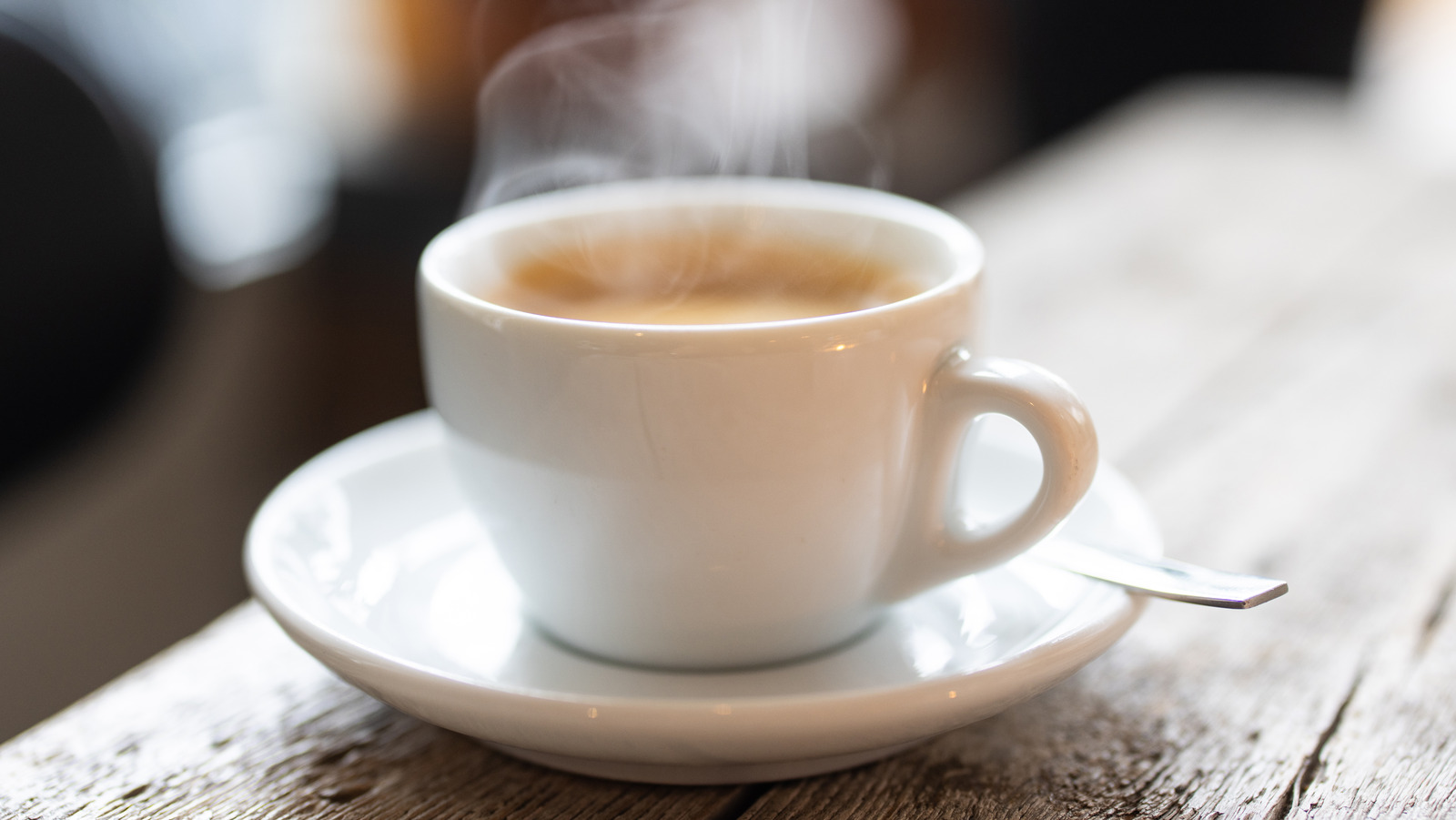
The Best Way to Reheat Coffee: A Guide to Preserving Flavor and Avoiding Bitterness
For many, coffee is more than just a beverage; it’s a ritual, a source of comfort, and a daily necessity. But what happens when that perfectly brewed cup cools down? The inevitable question arises: What is the best way to reheat coffee without sacrificing its delicate flavors and aromas? This article delves into the science and art of reheating coffee, exploring various methods and providing insights to ensure your coffee experience remains enjoyable, even when revisiting a previously brewed batch. We’ll analyze the pitfalls of common reheating techniques and guide you towards the optimal solutions for preserving the quality of your coffee.
Understanding the Science of Coffee Degradation
Before we explore the best way to reheat coffee, it’s crucial to understand why coffee loses its appeal as it cools. The complex chemical compounds that contribute to coffee’s flavor profile – acids, sugars, and volatile aromatic compounds – are highly sensitive to changes in temperature and exposure to air. As coffee cools, these compounds begin to break down, leading to a less vibrant and often bitter taste. Oxidation, the process by which coffee reacts with oxygen, accelerates this degradation process, further diminishing the coffee’s desirable characteristics.
The ideal coffee, freshly brewed, boasts a balanced acidity, sweetness, and a complex range of aromas. Reheating, if done improperly, can exacerbate these issues. Excessive heat can scorch the coffee, leading to a burnt, acrid taste. Furthermore, prolonged exposure to heat can alter the delicate balance of flavors, resulting in a significantly less enjoyable beverage.
The Perils of Common Reheating Methods
Many coffee drinkers resort to the microwave as their go-to method for reheating. While convenient, the microwave is often the least desirable option. Microwaves heat unevenly, leading to hot spots that can scorch the coffee. The rapid heating process also tends to strip away the volatile aromatic compounds, resulting in a flat and less flavorful cup. This is arguably the worst way to reheat coffee.
Another common approach is to reheat coffee on the stovetop. While this method offers more control than the microwave, it still presents challenges. Direct heat can easily overheat the coffee, leading to a bitter taste. Moreover, the stovetop method can be time-consuming and requires constant monitoring to prevent burning. It is generally not the best way to reheat coffee.
Exploring the Best Methods for Reheating Coffee
So, what is the best way to reheat coffee? The answer lies in methods that prioritize gentle and even heating. Here are the top contenders:
- The Stovetop (Controlled): While the stovetop can be problematic, it can be used effectively if done carefully. Use a low heat setting and monitor the coffee closely, stirring frequently to ensure even heating. Remove the coffee from the heat just before it reaches your desired temperature. This method offers more control than the microwave but requires vigilance.
- The Coffee Maker (Warming Plate): Many coffee makers come equipped with a warming plate. This is a viable option, especially if you have a limited amount of coffee. However, it’s important to be aware that warming plates can sometimes overheat coffee over extended periods. Constant monitoring is key.
- The Sous Vide Method: This might sound unconventional, but sous vide offers precise temperature control, making it a potentially excellent method. Place the coffee in a sealed, heat-safe bag and submerge it in a water bath set to your desired temperature. This ensures even heating without scorching. This is probably the most effective way to reheat coffee without sacrificing flavor.
- The French Press Method (Pre-Heating): If you use a French Press, you can pre-heat the carafe by rinsing it with hot water before brewing. This helps maintain the coffee’s temperature and can extend its freshness.
Step-by-Step Guide to the Best Way to Reheat Coffee: The Stovetop (Controlled)
For the majority of coffee drinkers, the stovetop offers a good balance of convenience and control. Here’s a step-by-step guide to ensure the best way to reheat coffee using this method:
- Preparation: Pour the cooled coffee into a saucepan. Ensure the saucepan is clean and free of any lingering residue.
- Heat Control: Place the saucepan on the stovetop and set the heat to low. The key is to apply gentle heat.
- Constant Monitoring: Stay close to the stovetop. Watch the coffee carefully and stir it frequently. This ensures even heating and prevents scorching.
- Temperature Check: Use a thermometer to monitor the coffee’s temperature. Aim for a temperature just below boiling point (around 200°F or 93°C).
- Remove from Heat: Once the coffee reaches your desired temperature, immediately remove the saucepan from the heat.
- Serve Immediately: Pour the reheated coffee into your favorite mug and enjoy.
Tips for Preserving Flavor During Reheating
Regardless of the method you choose, there are additional steps you can take to preserve the flavor of your coffee:
- Use Freshly Brewed Coffee: The quality of the original brew greatly influences the final result. Start with high-quality coffee beans and brew your coffee using your preferred method.
- Avoid Overheating: The most common mistake is overheating the coffee, which leads to bitterness. Monitor the temperature closely and remove the coffee from the heat just before it reaches your desired temperature.
- Add Fresh Coffee: If you have a small amount of cooled coffee, consider adding a splash of freshly brewed coffee to revitalize the flavor. This can help to dilute any bitterness that may have developed.
- Store Coffee Properly: If you know you’ll be reheating your coffee, store it in an airtight container in the refrigerator to slow down the degradation process.
- Experiment with Methods: Find the method that works best for you and your coffee. Everyone’s taste preferences are different. Experiment with different approaches to find what you like.
The Impact of Coffee Quality on Reheating
The quality of the coffee itself plays a significant role in how it reheats. Coffee made with freshly roasted, high-quality beans will generally hold its flavor better than coffee made with older or lower-grade beans. The brewing method also matters; a well-brewed cup of coffee, regardless of the method, will always be a better starting point. The best way to reheat coffee starts with the coffee itself.
Consider the grind size, water temperature, and brewing time. Experiment to find what works best for your beans and your taste preference. The more care and attention you put into the initial brewing process, the better your reheated coffee will taste.
Beyond Reheating: Preventing the Need to Reheat
While knowing the best way to reheat coffee is important, preventing the need to reheat altogether is even better. Here are some strategies:
- Brew Smaller Batches: Brew only what you intend to drink.
- Use a Thermal Carafe: A thermal carafe keeps coffee hot for hours without using a warming plate.
- Insulated Mugs: Use an insulated travel mug or mug to keep your coffee hotter for longer.
- Drink it Fresh: The simplest solution is to drink your coffee while it’s fresh.
Conclusion: Choosing the Best Way to Reheat Coffee for You
In conclusion, there is no single, universally accepted best way to reheat coffee. The ideal method depends on your personal preferences, available equipment, and the quality of the original brew. By understanding the science behind coffee degradation and experimenting with different techniques, you can find the perfect method to preserve the flavor and enjoy a satisfying cup of reheated coffee. Remember, the goal is to minimize heat exposure and maintain the delicate balance of flavors that make coffee so enjoyable. The stovetop, used with care, is often a good choice, as is the sous vide method. Ultimately, the best approach is the one that delivers the most palatable result for you. Practice and experimentation will lead you to your preferred method.
So, next time you find yourself with a cold cup, don’t despair. With the knowledge and techniques outlined in this guide, you can confidently reheat your coffee and savor every last drop. [See also: How to Brew the Perfect Cup of Coffee]


